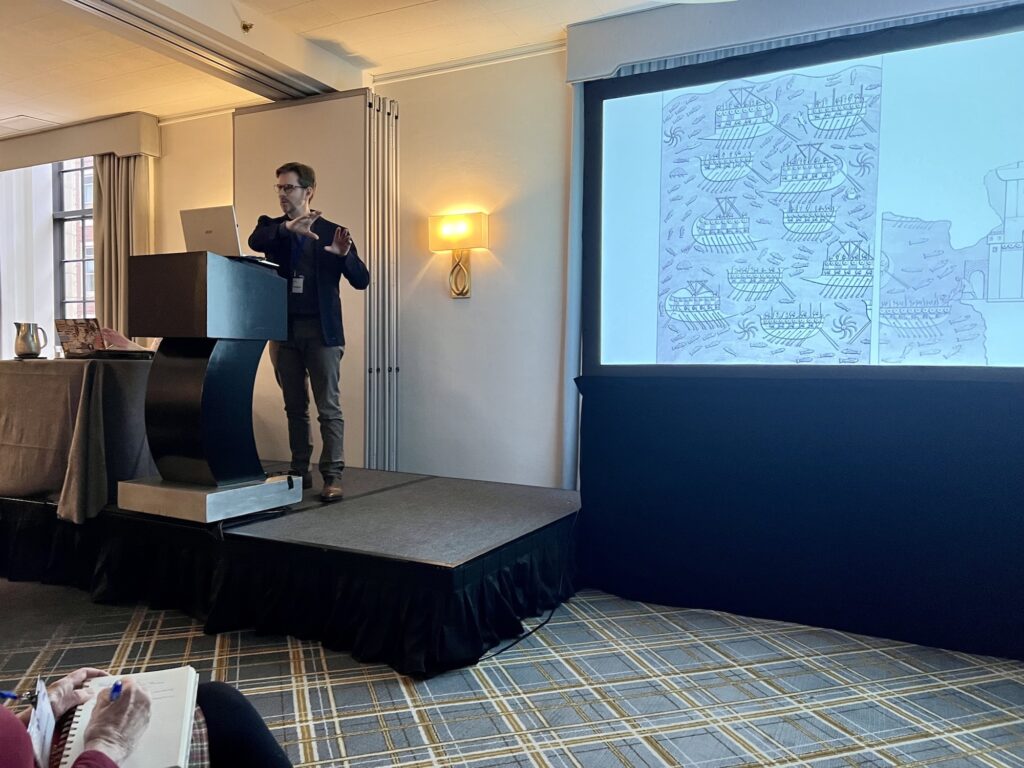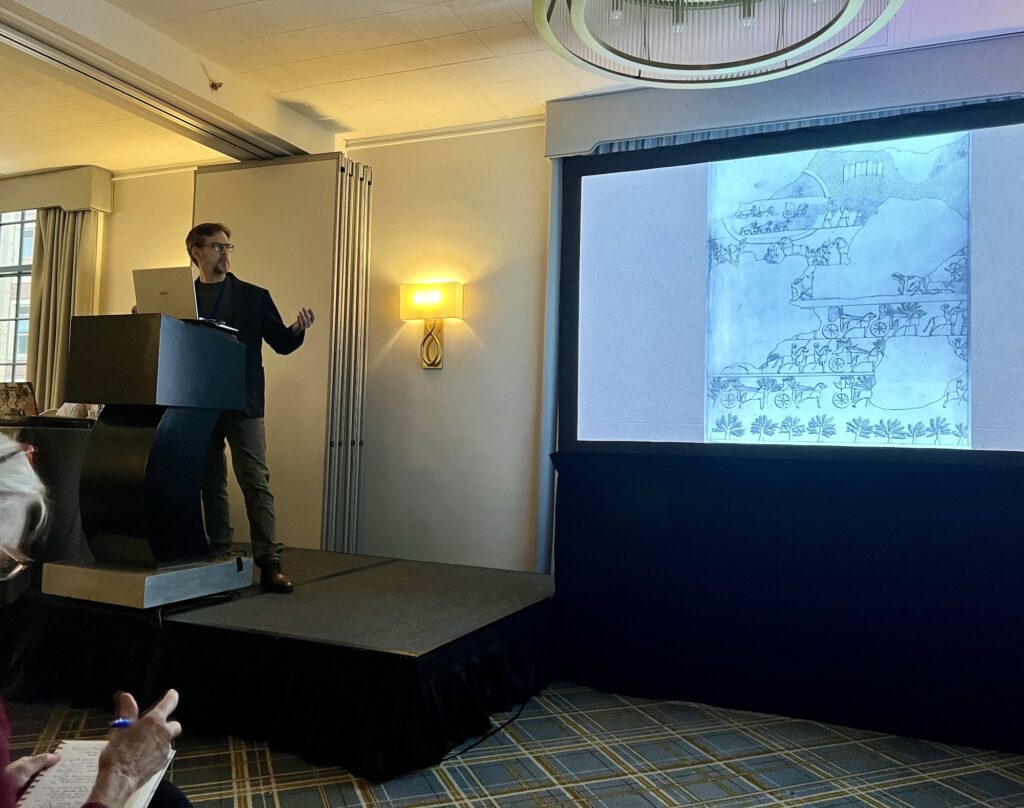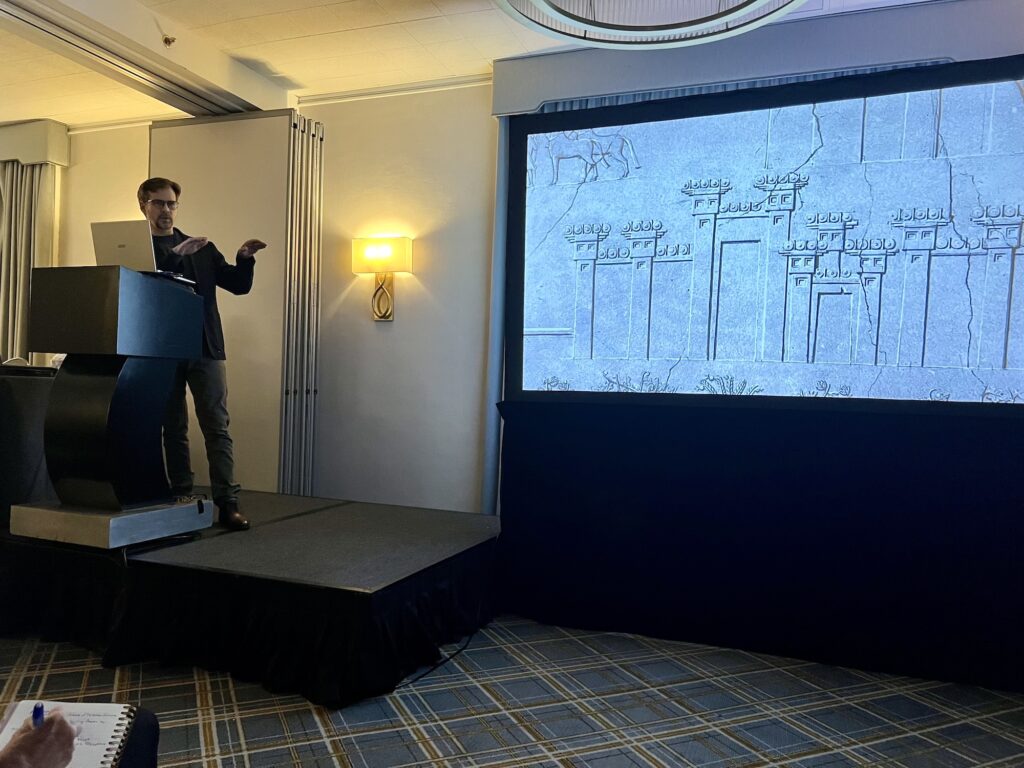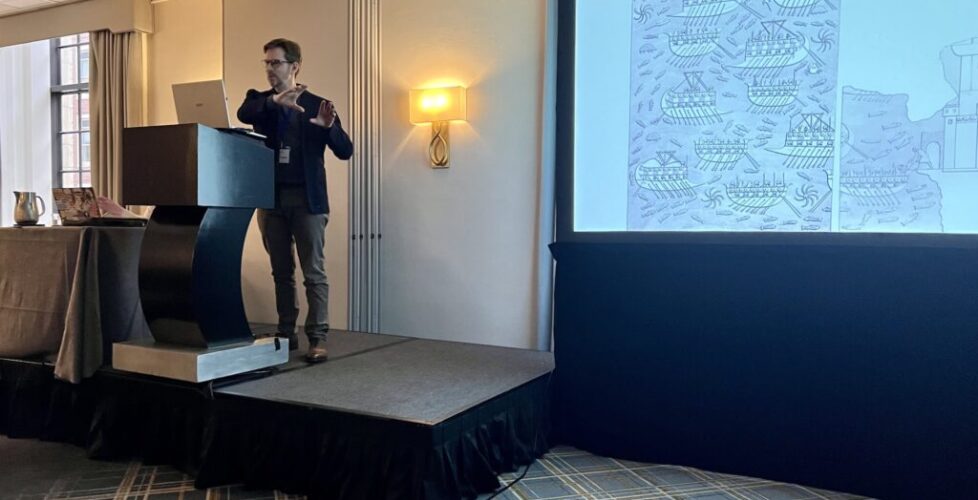ASOR 2024
Had an amazing time at the ASOR 2024 conference and seeing Boston. Below is the abstract from my presentation interspersed with the relevant slides (photos courtesy of Professor Takayoshi Oshima):
The Visual Storytelling on Sennacherib’s Throne-Room Wall: New Insights into His Invasions of Ushu and Jerusalem
In the largest ancient Assyrian room ever excavated, on the long wall to the right of Sennacherib’s throne, carved stone panels depicted his 701 BCE invasions of Phoenicia, Philistia, and Judah. It will be shown that the opening scene depicts his conquest of Ushu and locates this important Phoenician city at the site that later became Alexandroschene (Alexander the Great’s fortress against Tyre) and, still later, the Crusader fortress Scandelion.

The next scene depicts his triumph over Egyptian and Kushite cavalry and charioteers near Eltekeh in Philistia.

For the third and final scene, Christoph Uehlinger has proposed (and the context explored in this study confirms) that it depicts Jerusalem. However, unlike other besieged cities, Jerusalem is not shown being conquered, looted, or burned but surviving intact, its walls unbreached and its king, Hezekiah, alive and free. The rebels surviving cannot have been what Sennacherib intended to feature as the final image to the right of his throne. Rather, it will be argued that the four uncarved panels that followed were deliberately left blank in order to portray a planned return to and sack of Jerusalem. However, Sennacherib’s second invasion was forestalled by a massive tribute payment from Hezekiah and a rebellion in Babylon, leaving the final section of panels blank ever after.

